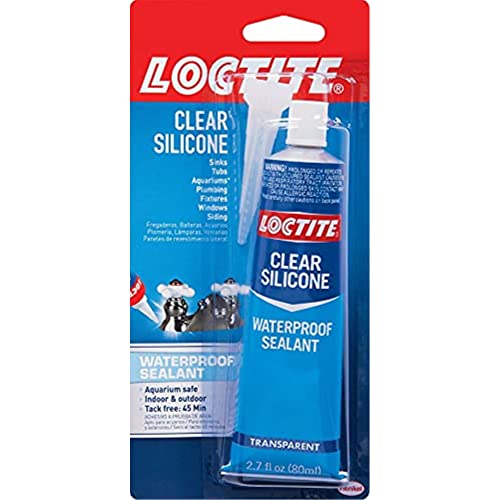It is not uncommon for furnaces, now on air conditioning duty, to leak water during the summer. If you notice this, you will naturally wonder what could be wrong. In this post, we answer your question using industry professional knowledge and up-to-date research.
There are many potential issues that can lead to water leaks in and around your furnace during the summer. The primary issues are as follows:
- Clogged Condensation Line
- Broken Drip Pan
- Broken Condensate Pump
- Frosting Evaporator Coils
- Other System Issue
Keep reading the rest of this post for details on each of the above bullet points. This guide will give you all the information you need to troubleshoot your summertime furnace water leak. We also cover why furnace leaks are a problem, what happens if your furnace gets wet, and how to fix furnace leaks.
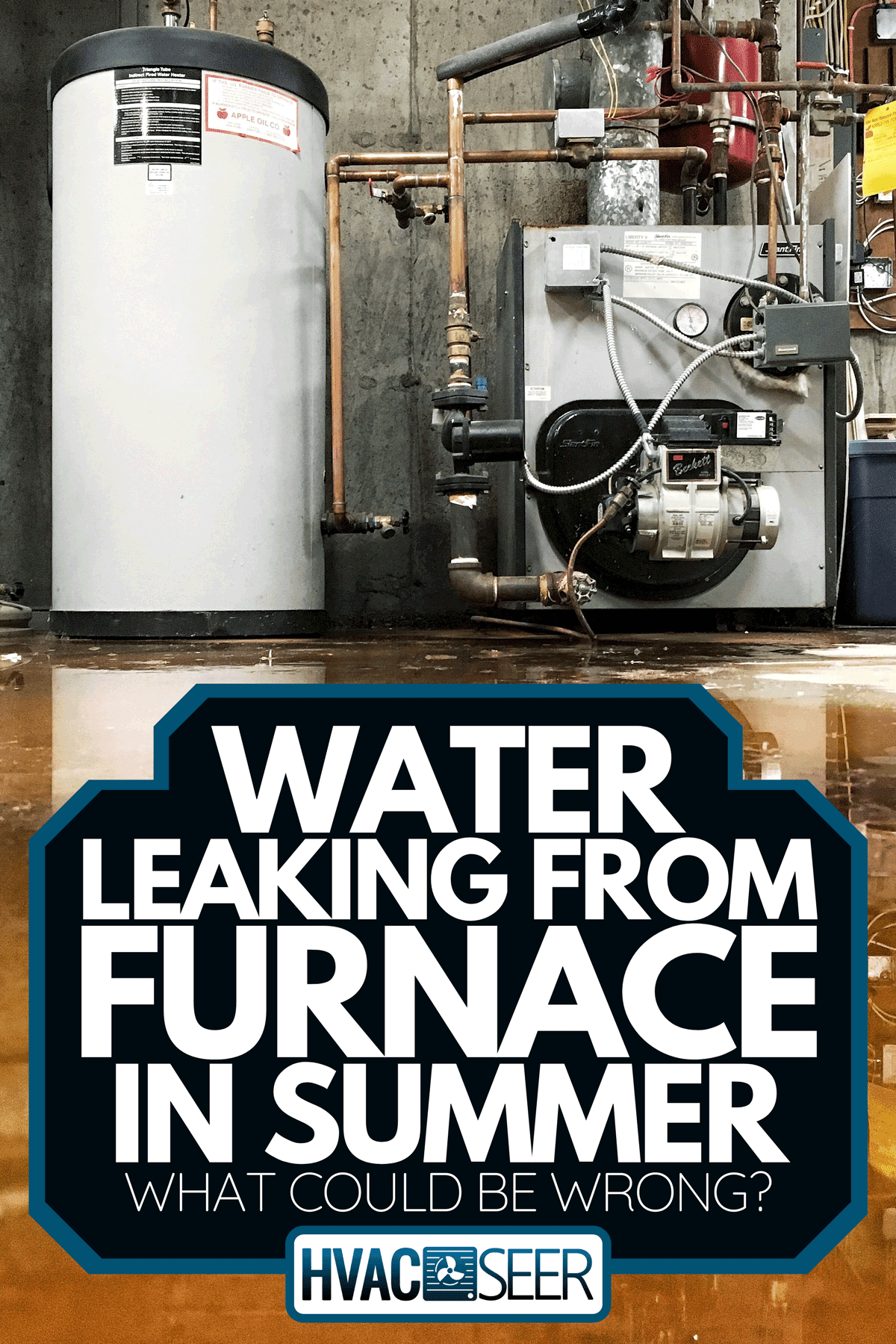
Is it Bad if My Furnace is Leaking Water?
The short answer is yes, water leaks are bad within a furnace. However, all furnaces, when set to AC mode, create water during the summer months. This water is the result of condensation.
Condensation occurs because cold air holds less moisture than warm air. As your air is cooled off by your air conditioning system, water essentially falls out of that freshly cooled air. This process is called condensation.
Because of this inevitable condensation, furnaces are designed to effectively remove that water from the system and from your house. Generally, this water is either removed through a condensation line and a drip pan or through a condensate pump.
Issues with either of these system types are common causes of furnace water leaks. However, and as mentioned above, several other issues can also cause your furnace to leak water.
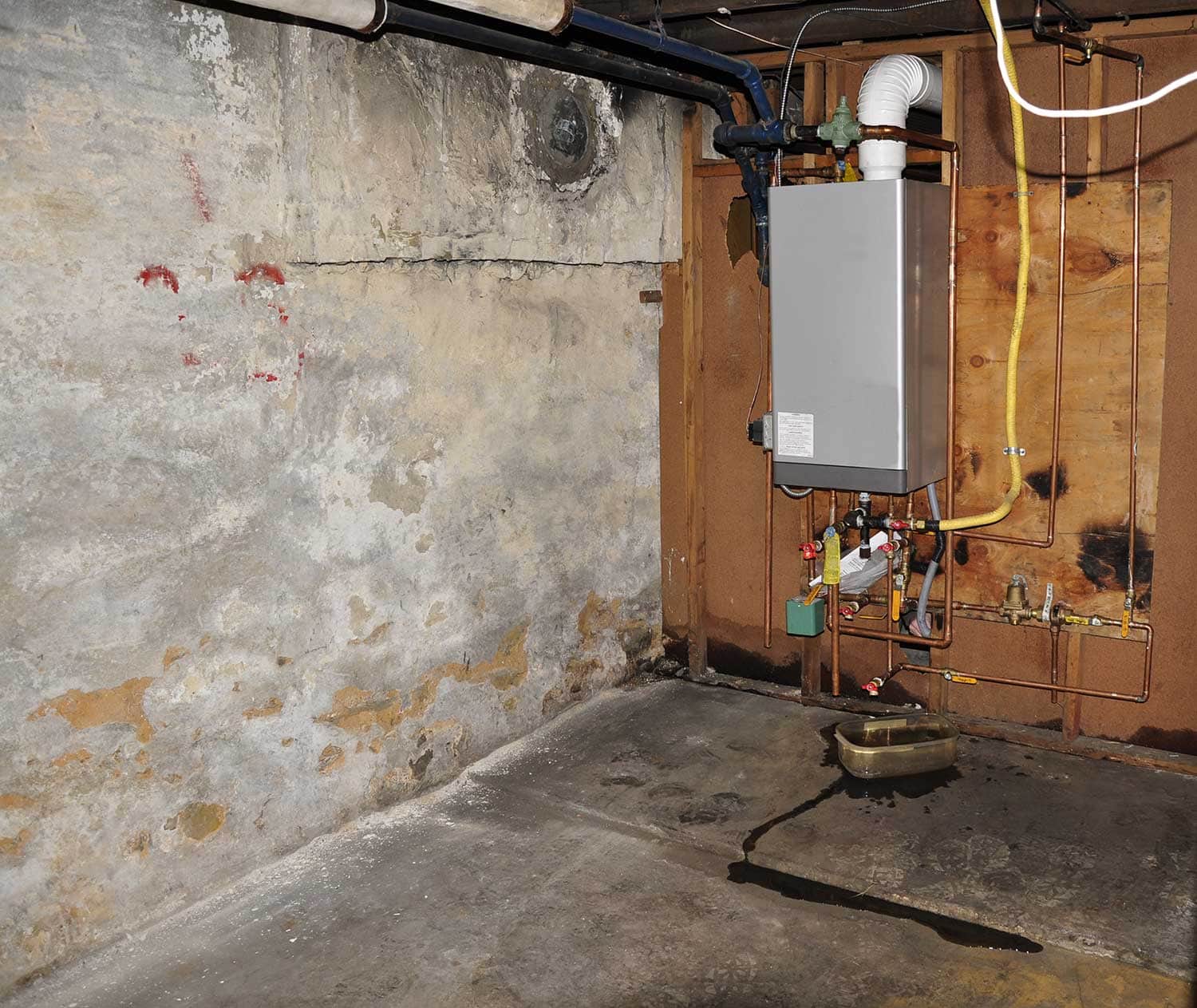
What Happens if a Furnace Gets Wet?
Whatever the cause, water entering the wrong parts of your furnace can cause several issues. First of all, moisture will cause your furnace elements to rust, corrode, and fall apart. As this happens, your furnace will work less and less efficiently which will cost you more and more money.
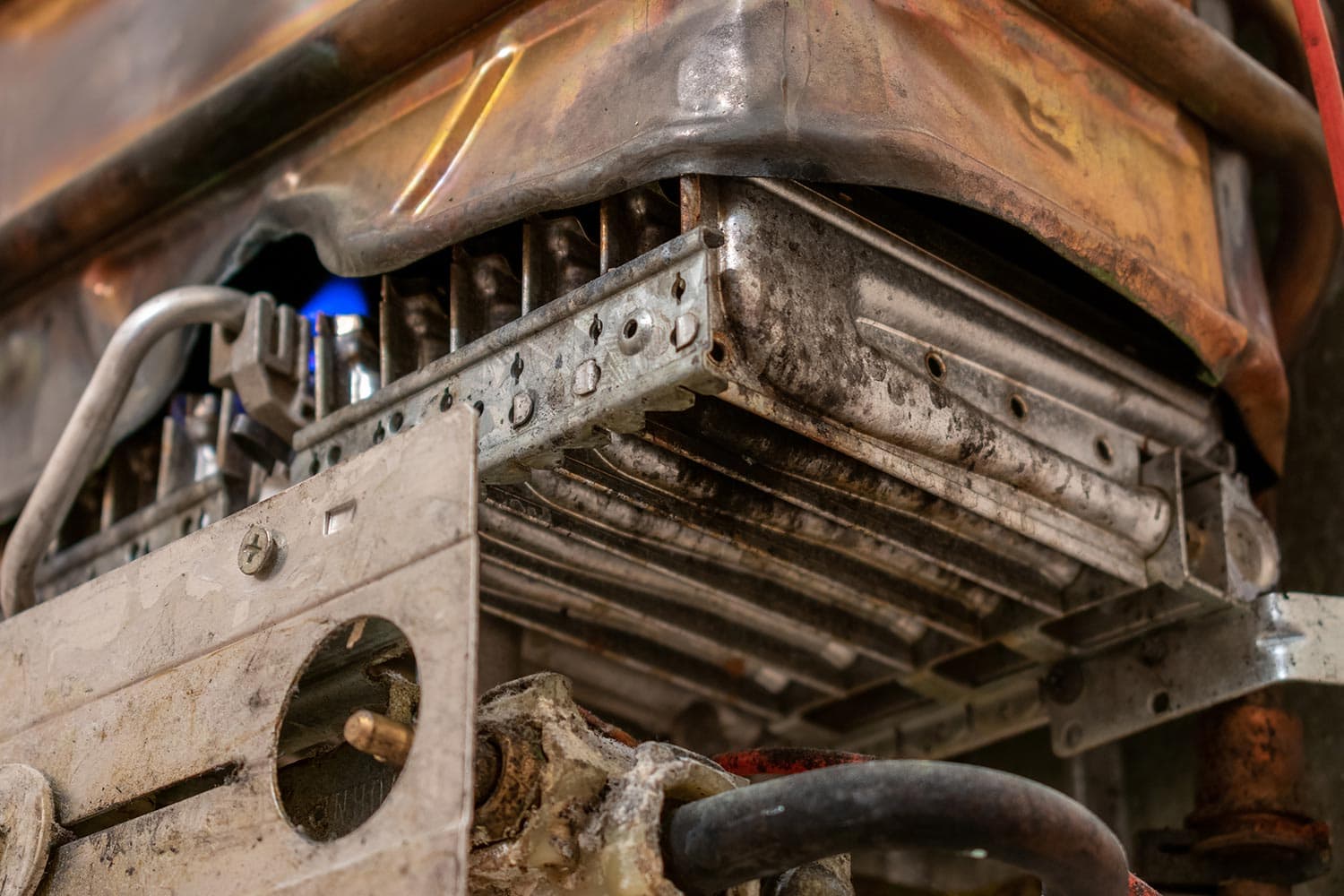
Secondly, many of the parts of your furnace rely on electricity. When inundated by water these elements will short which can cause permanent or temporary damage.
Finally, and according to this article by the Environmental Protection Agency, moisture in your HVAC system can cause the growth of mold and mildew. These organisms are particularly problematic because they exacerbate existing upper respiratory conditions and can even lead to new upper respiratory issues.
What is Causing my Furnace to Leak Water
As discussed above, furnace water leaks are no joke. Therefore, it is very important to identify the cause of your leak and get the issue fixed. Read through the following list to identify what type of water leak you have and some tips to potentially troubleshoot your problem.
To help identify the furnace elements discussed below, use a schematic of your furnace. These are often available in the furnace owner's manual or can be searched online through the furnace make and model. Alternatively, you can use a general furnace schematic widely available online.
Remember, when working on your furnace always flip the furnace breaker to the off position in order to protect yourself from harmful electric shock.
Clogged or Broken Condensation Line
A clogged condensation line is probably the most common cause of summertime furnace leaks. This line connects to your drip pan and then runs to the outside of your home. Therefore, all the water that falls onto your drip pan will drain harmlessly away.
If the condensation line is clogged or broken the water instead will overflow your drip pan and leak into your furnace, the surrounding area, and onto your floor. To identify a condensation line issue look for a completely full drip pan that is slowly overflowing. .
Click here for a condensate line cleaner from Amazon.
It is sometimes easy to fix a condensation line that is plugged right at the opening with your fingers or a small tool. Other times, you can snake or blow out the condensation line to remove clogs.
Broken Drip Pan
The drip pan is designed to catch all water that falls from the heat exchanger of your furnace allowing the condensation line to drain that water. Often, the drip pan will corrode and rust away - which leads to small leaks.
Click here for silicone caulk from Amazon.
Either way, it is sometimes possible to repair the hole in your drip pan with products such as silicone caulk. This caulk is relatively easy to apply, inert once dry, and very waterproof. After you have dried out your drip pan, fill all holes with the sealant, and let the caulk dry before using the pan again.
If you cannot repair your drip pan, it is not out of the question to replace the whole pan with a brand new one.
Broken Condensate Pump
Some furnaces deal with condensed water using a device known as a condensate pump. Essentially, this is a water pump that pumps water out of the home and furnace. Identify a broken condensate pump through a condensate pump reservoir or drip pan that is overfilling without triggering the pump.
To troubleshoot this issue first check to see if power is reaching the pump. Sometimes, you might be able to flip a breaker back to 'on' to fix the issue, while other times the pump might have an on/off switch that has been moved to the wrong position.
Next, clean the pump, the pump float, the pump valve, and all other accessible areas. Often, algae or other build-ups will lead to the malfunction and a bit of cleaning will solve the problem.
Finally, try gently tapping the microswitch for the pump with something plastic and non-conductive. Be careful, you do not want to shock yourself here. Often, you can solve microswitch failures with this simple step.
Click here for a new condensate pump from Amazon.
If these steps do not work, it is time to call an HVAC professional to try their hand at fixing the condensate pump. In the worst-case scenario, you will need to replace the pump with a new unit.
Frosting Evaporator Coils
In the summer, your furnace air conditioner works by bringing your home air into contact with very cold evaporator coils. Some of that 'cold' enters into your air thus creating a more comfortable indoor temperature.

However, if not enough air moves across your evaporator coils the coils will get too cold and start to frost. When this frost melts, it often drips to places outside of the designed catchment of the system. Thus, the drip pan, condensate line, or condenser pump cannot capture the water.
Therefore, when your evaporator coils start to regularly frost, your furnace may drip water every time the furnace/AC unit cycles off. Further, frosting evaporator coils mean your furnace is not working properly which will lead to higher utility bills and less in-home comfort.
The most common causes of frosting evaporator coils include a clogged air filter and a broken or malfunctioning blower.
Clogged Air Filter
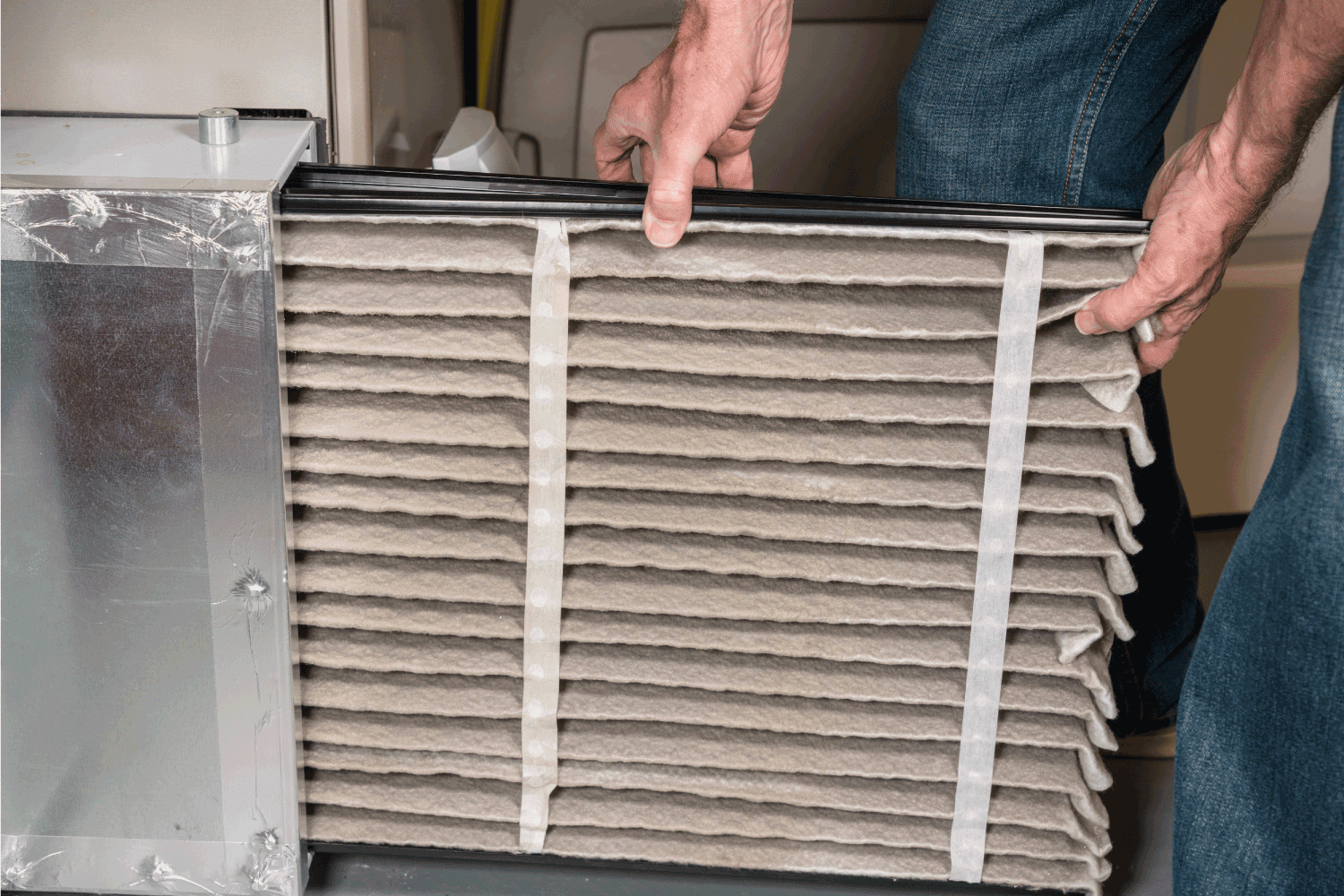
When your air filter becomes very clogged, your blower fan may not have the power to pull enough air over your coils. This will lead to evaporator coil frosting.
Click here for new furnace air filters from Amazon.
Fortunately, fixing a clogged air filter is as easy as replacing the filter or cleaning the filter. Whether you replace or clean depends on your filter type.
Generally, and according to this article from Energystar.gov, it is advisable to replace or clean your filter every month. Take note, always replace your old air filter with a new filter of the same dimensions.
Broken Blower
The next issue to look for if you notice frosting evaporator coils is a broken or underperforming blower fan. Like all mechanical systems, the blower fan will begin to fail over time. First, ensure your blower has power, and then try cleaning and oiling all moving parts as recommended in your owner's manual.
Click here for an electrical component cleaner from Amazon.
If these simple steps do not work, consider calling an HVAC professional to troubleshoot your fan system.
Other System Issue
Finally, if any other part of your furnace system fails it may lead to frost on your evaporator coils or condensation in the wrong part of your system. If you cannot find the exact cause of your summertime furnace leak listed above, you are likely dealing with a more serious and less common problem.
First, check to see if you have an adjacent plumbing leak that just looks like a furnace leak. Then, consider that evaporator coolant is a liquid and you may be dealing with a leak other than water. Finally, call in a specialist to take the time to diagnose the source of the leak.
How Do you Fix a Furnace that Leaks Water?
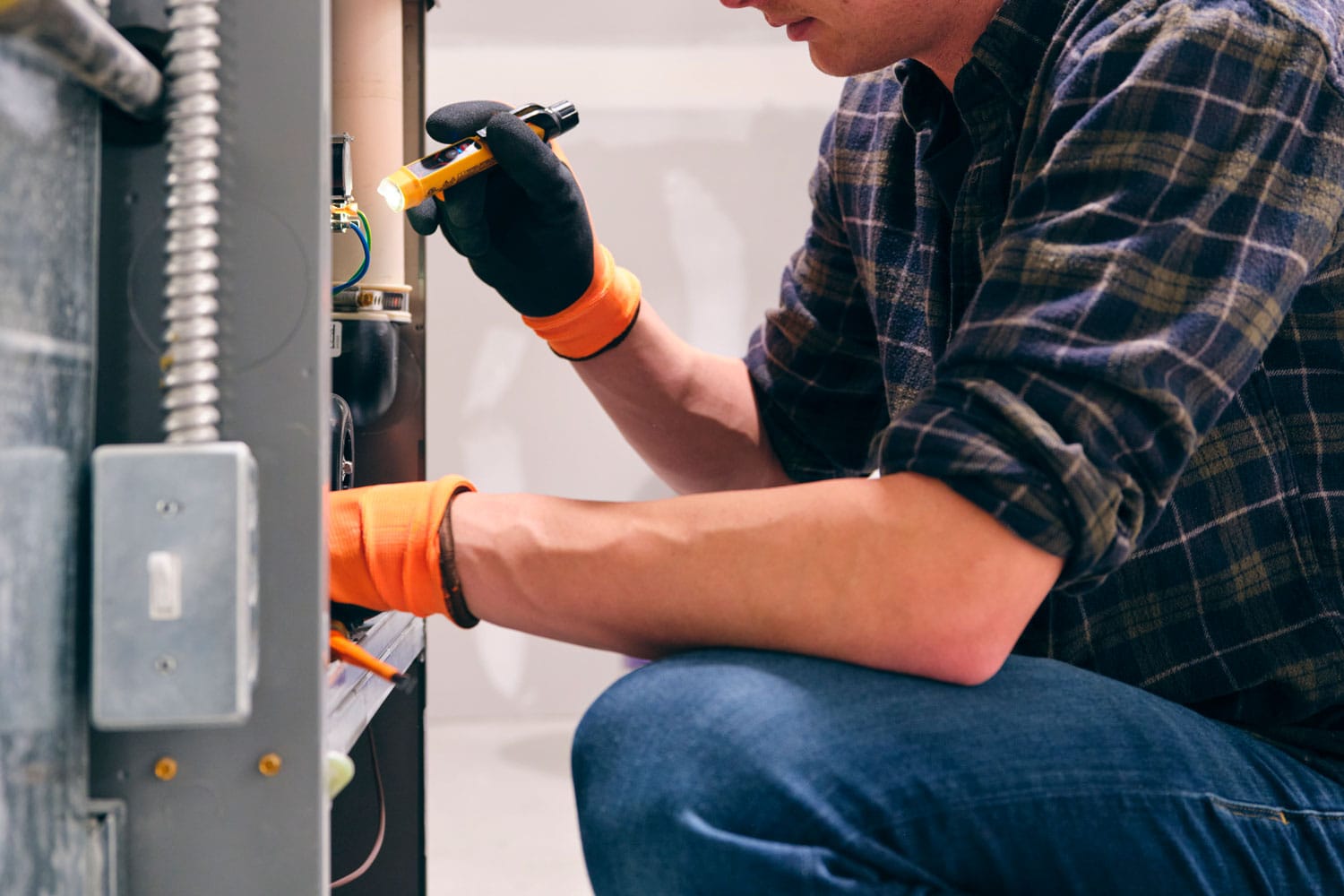
If your furnace is leaking water, consider taking the steps recommended in the above sections. However, if you find that you cannot identify or fix the issue on your own call an HVAC professional to fix the problem for you.
Additional Reading
To learn more about ensuring your furnace and AC is running properly, consider reading these great articles from HVAC Seer:
- How To Clean Evaporator Coils On Central Air Conditioner
- Furnace Is Sweating: What Could Be Wrong?
- Should My Furnace Leak Air?
In Closing
In this post, we answered the question of what could be the cause of a summertime water leak in your furnace. We include all common leak sources and a few fixes associated with these issues. To conclude, we recommend an additional reading list. Good luck!


